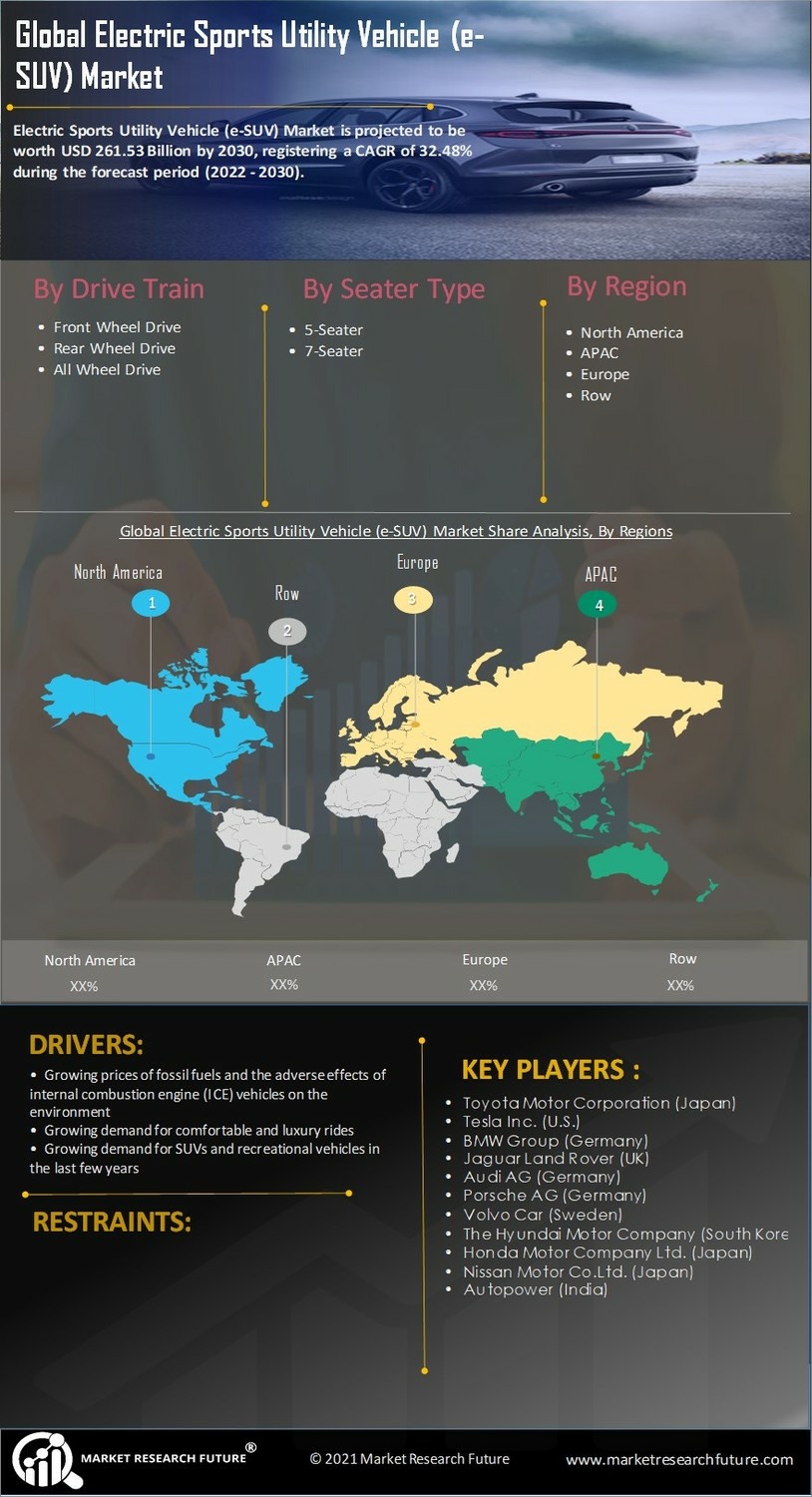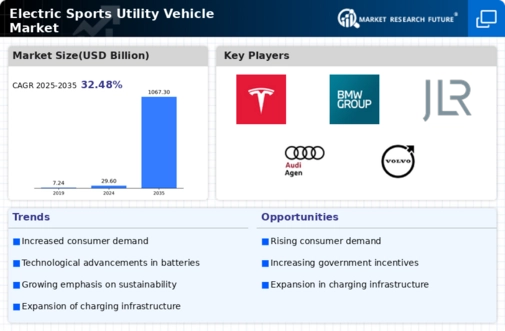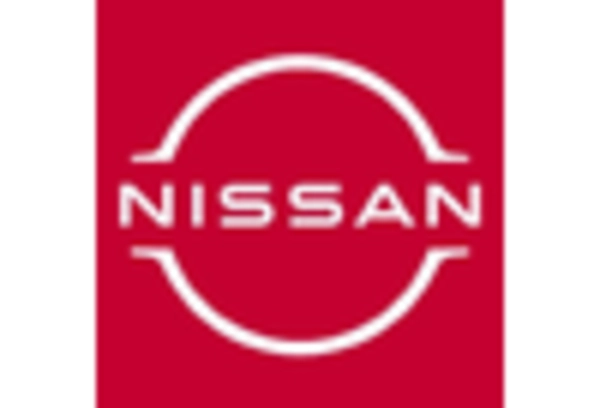The Electric Sports Utility Vehicle Market is currently characterized by intense competition and rapid innovation, driven by a growing consumer preference for sustainable mobility solutions. Key players such as Tesla (US), Ford (US), and Volkswagen (DE) are at the forefront, each adopting distinct strategies to enhance their market positioning. Tesla (US) continues to lead with its focus on cutting-edge technology and extensive charging infrastructure, while Ford (US) emphasizes its commitment to electrification through significant investments in electric vehicle (EV) production and partnerships with battery manufacturers. Volkswagen (DE), on the other hand, is leveraging its global presence to expand its electric offerings, aiming for a substantial increase in EV sales by 2026, thereby shaping a competitive environment that is increasingly focused on innovation and sustainability.
In terms of business tactics, companies are localizing manufacturing to reduce costs and enhance supply chain efficiency. This approach is particularly evident in the strategies of Ford (US) and Volkswagen (DE), which have established production facilities in key markets to mitigate supply chain disruptions. The market structure appears moderately fragmented, with several players vying for market share, yet the collective influence of major companies is significant, as they set the pace for technological advancements and consumer expectations.
In November 2025, Ford (US) announced a strategic partnership with a leading battery technology firm to develop next-generation solid-state batteries. This move is likely to enhance Ford's competitive edge by improving vehicle range and charging times, addressing two critical consumer concerns in the EV market. The partnership underscores Ford's commitment to innovation and positions it favorably against competitors.
In October 2025, Volkswagen (DE) unveiled its ambitious plan to invest €30 billion in electric vehicle development over the next five years. This investment is expected to accelerate the rollout of new electric models and expand the company's production capabilities. By prioritizing EV development, Volkswagen aims to capture a larger share of the growing market, indicating a strategic shift towards electrification that could redefine its competitive landscape.
In December 2025, Tesla (US) launched a new software update that integrates advanced AI features into its vehicles, enhancing autonomous driving capabilities. This development not only reinforces Tesla's position as a technology leader but also highlights the increasing importance of software in the automotive sector. The integration of AI is likely to attract tech-savvy consumers and further differentiate Tesla from traditional automakers.
As of December 2025, the competitive trends in the Electric Sports Utility Vehicle Market are increasingly defined by digitalization, sustainability, and the integration of AI technologies. Strategic alliances are becoming more prevalent, as companies recognize the need for collaboration to enhance innovation and efficiency. Looking ahead, competitive differentiation is expected to evolve, with a shift from price-based competition to a focus on technological advancements, sustainability initiatives, and supply chain reliability. This transition suggests that companies that prioritize innovation and strategic partnerships will likely emerge as leaders in the market.

















Leave a Comment